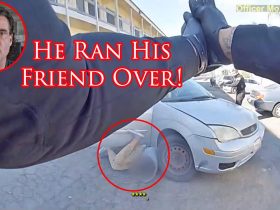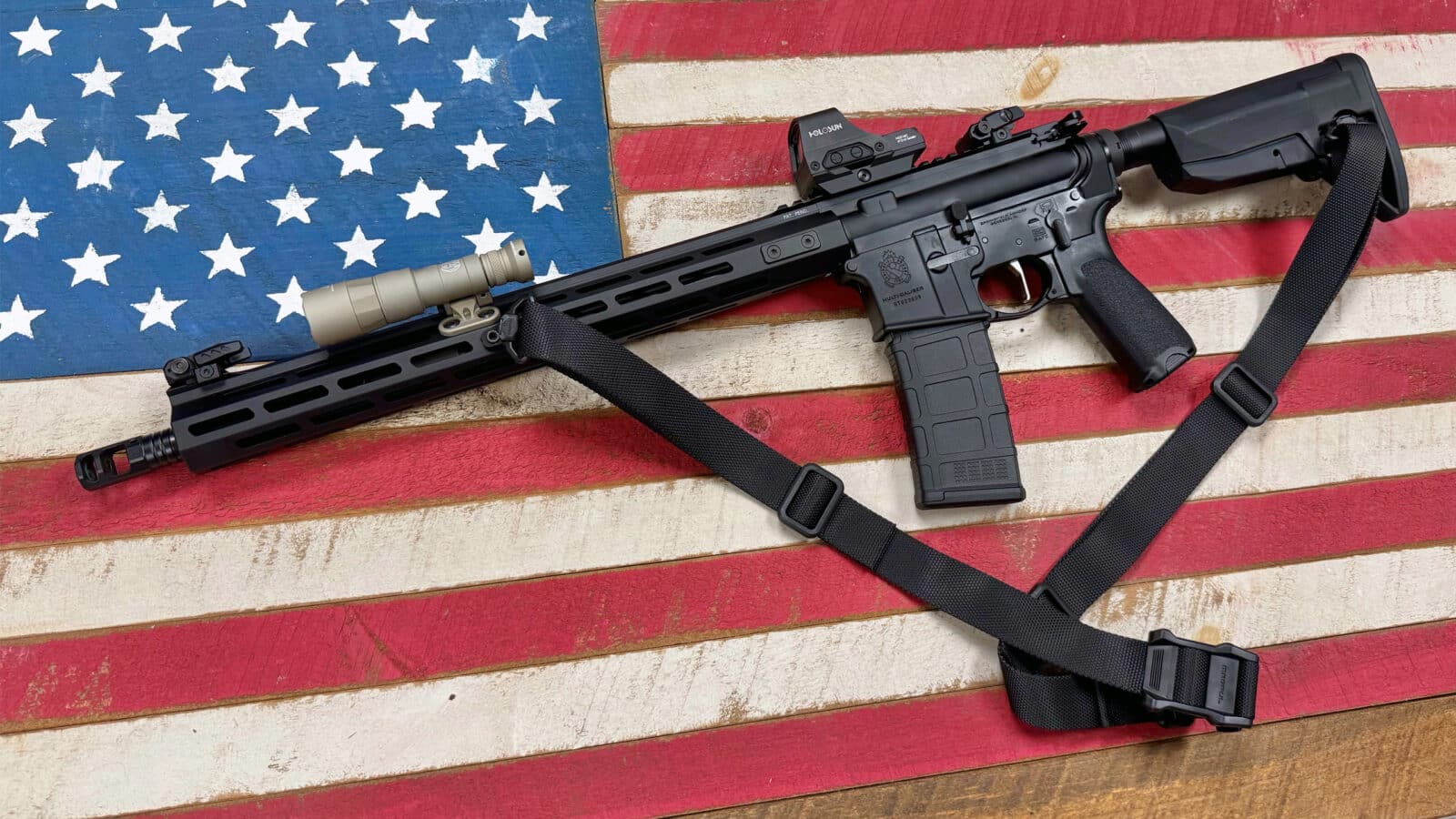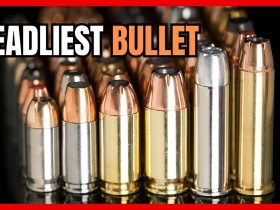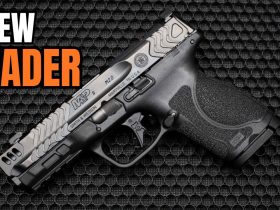Illinois gives us a rare case of a direct comparison between a state’s mandated police qualification and the qualification test required for Armed Citizens to obtain a concealed carry license. The Illinois Concealed Carry License live fire qualification is a shortened and simplified version of that state’s police qualification course.
The target for the Concealed Carry License is larger: a full B-27, as compared to legal-size sheet of paper for the police. The police qualification is timed for two- and three-shot strings with generous time limits. Conversely, the concealed carry test is shot untimed in 10-round strings. The farthest distance for the police qualification is 15 yards, but the concealed-carry qualification has a maximum distance of 10 yards. Finally, the round count is slightly reduced from 36 to 30 for the concealed carry test. Police fire their off‑duty and backup guns starting from the low ready position for their qualification, making it is a direct parallel to how most private citizens shoot at most indoor ranges.
Following up the CCL Qualification with an even more demanding test gives us a good structure for a 50-round shooting practice and evaluation session.
Illinois Firearm Concealed Carry Live Fire Qualification – 30 rounds
The Illinois Concealed Carry License live-fire qualification consists of 30 rounds. Ten rounds are fired at each of 5, 7 and 10 yards. Since the police must hit a legal-sized sheet of paper for their qualification, we can add such a sheet to the required B-27 target for comparison, should we so desire. Posting a copy of the course of fire where it’s readily visible to us will keep us on task.
Where permissible by the facility, include a dry (no ammo) draw at the beginning of each distance’s shooting. Then load the pistol and shoot from low ready. Otherwise, simply begin from low ready.
Place the target at 5 yards. Fire the 10 rounds in 5 strings of 2 rounds starting each string from low ready. There is no time limit for private citizens, but the police must fire their five repetitions of two rounds in 6 seconds for each two-round string. We can estimate this cadence by counting to ourselves, “One thousand, FIRE, two thousand, FIRE.” As we say, “one [two] thousand,” take up the slack of the trigger, continue pressing the trigger, and try to have the pistol go off at “FIRE.” After the five strings, score and mark your hits with masking tape.
Next, place the target at 7 yards. At this distance, the police fire four strings of three shots in 7 seconds. Although we have no time limit, learning to shoot in cadence is a valuable addition to our ability. We can fire our 10 rounds in two strings of two rounds in 7 seconds, then work up to three rounds in 7 seconds for two more strings. Start each string from low ready. We can again estimate this cadence by counting to ourselves as we shoot. “One thousand, FIRE, two thousand, FIRE” is the count for the two-shot strings. For the three-shot strings, our pace will pick up a bit as we say to ourselves, “One thousand, FIRE, two thousand, FIRE, three thousand, FIRE.”
The final distance of the Illinois Test is 10 yards. Here, police officers fire four strings of three shots in 10 seconds. For our cadence learning, we can shoot our 10 rounds in two strings of two rounds in 10 seconds and then three rounds in 10 seconds to finish. Low ready is again the starting position. To estimate this slightly slower and more deliberate cadence, add a bit as we count to ourselves. “One thousand one, FIRE, one thousand two, FIRE” is the self-talk for the two shot strings. For the three-shot strings, the count becomes, “One thousand one, FIRE, one thousand two, FIRE, one thousand three, FIRE.”
Scoring and marking the hits after each distance gives us a much better evaluation of our marksmanship ability at the moment. Of the 30 rounds, 21 hits (70 percent) anywhere on the B-27 silhouette are required to pass the CCL Qualification. A better standard is to have all 30 shots hit the legal sheet of paper. Even small guns can achieve this standard with a good sight picture and smooth trigger press.
To finish up a 50-round box of ammo, an excellent personal evaluation test is the NRA Instructor Qualification.
NRA Instructor Qualification – 20 rounds
 The Instructor Qualification consists of 20 shots at 15 yards. The target is standardized by the NRA, having an 8-inch circle on it. Of the 20 shots, 16 (80 percent) must hit inside a six-inch circle somewhere on the target. This is a demanding standard and also gives the shooter a measurable indicator of where their gun shoots in their hands at that distance.
The Instructor Qualification consists of 20 shots at 15 yards. The target is standardized by the NRA, having an 8-inch circle on it. Of the 20 shots, 16 (80 percent) must hit inside a six-inch circle somewhere on the target. This is a demanding standard and also gives the shooter a measurable indicator of where their gun shoots in their hands at that distance.
Since it’s a longer and more exacting test, best practice would be to shoot it in five-shot strings. For shooters who aren’t sure where their gun shoots at this distance, after the first five-shot string, bring the target back, check the location of the group, and mark the hits. Decide if an adjusted aiming point is appropriate. Then place the target back at 15 yards and fire the remaining 15 shots in three-shot strings.
As a personal evaluation, it’s not necessary to pass the 80-percent standard. Rather, it’s an evaluation of where both you and the gun are. If you knew you could pass it easily, it wouldn’t really be a test, would it? Afterward, you may determine that some sight adjustment is needed to move your group closer to the target center. And, you may decide that some dry practice as a follow up will assist you the next time you try it.
Doing a session with this structure teaches cadence shooting, marksmanship at longer distances, and an evaluation of where one’s own pistol shoots at an extended range target. All are valuable skills in the context of personal protection with a pistol.
Read the full article here


















Leave a Reply